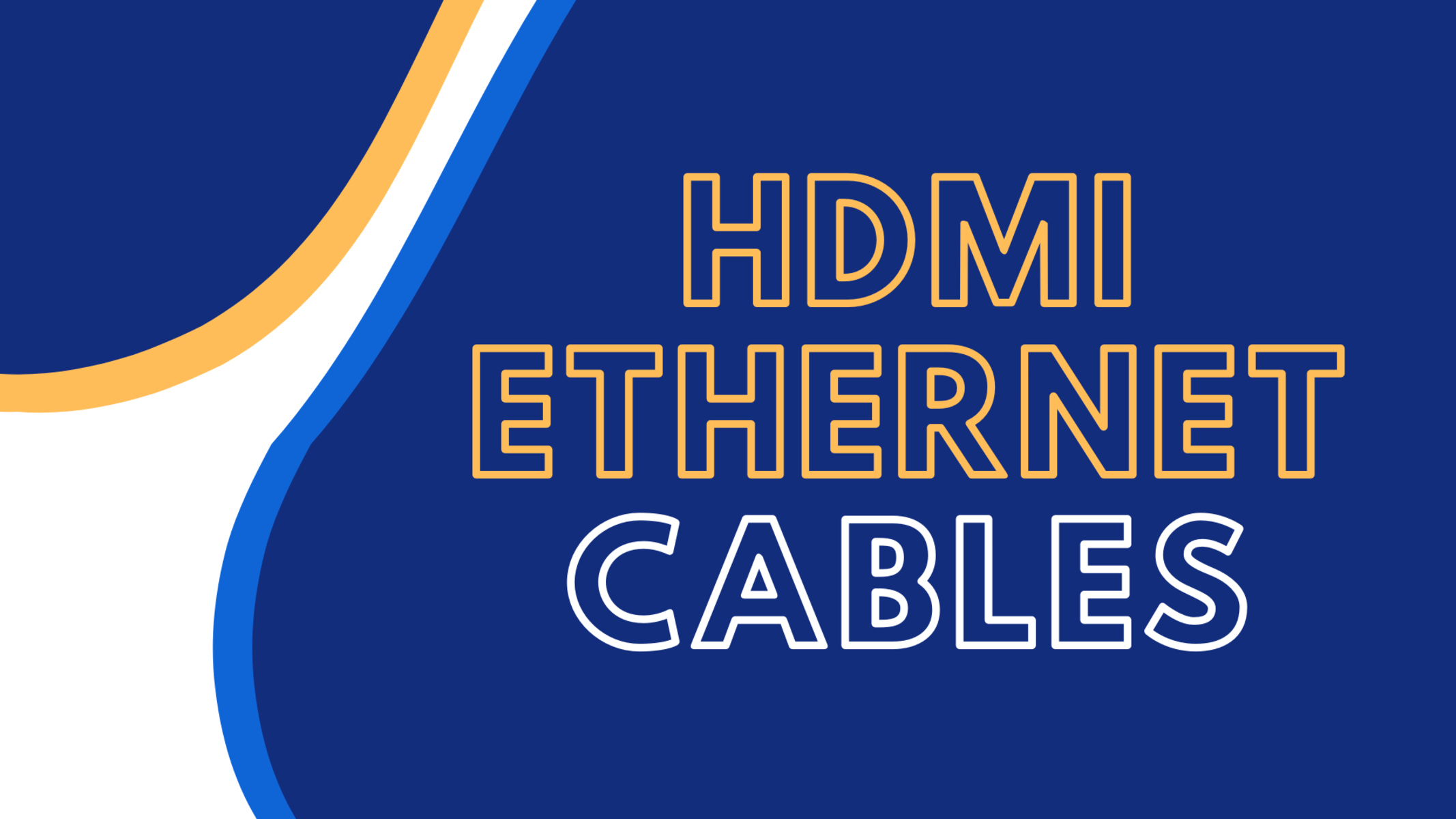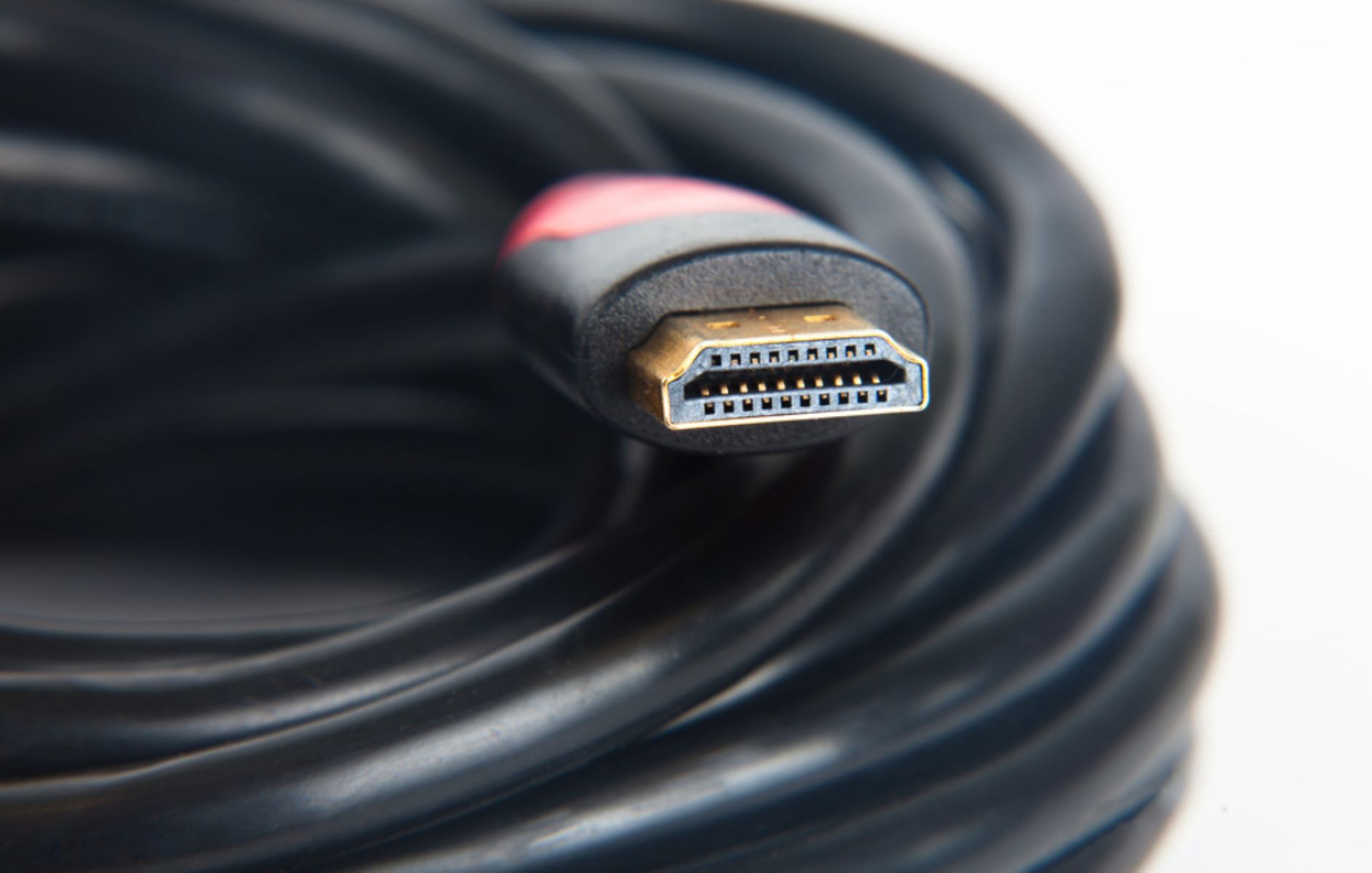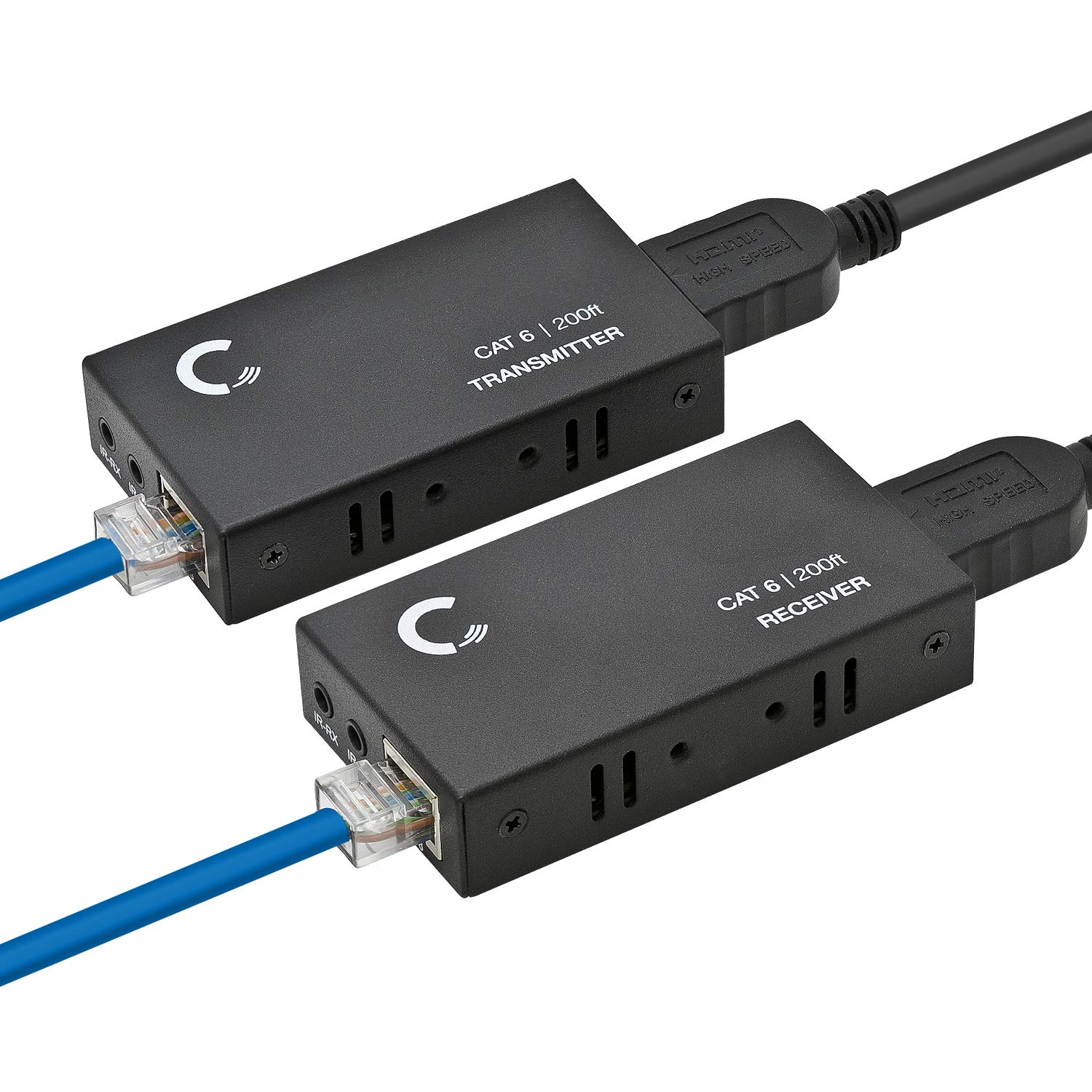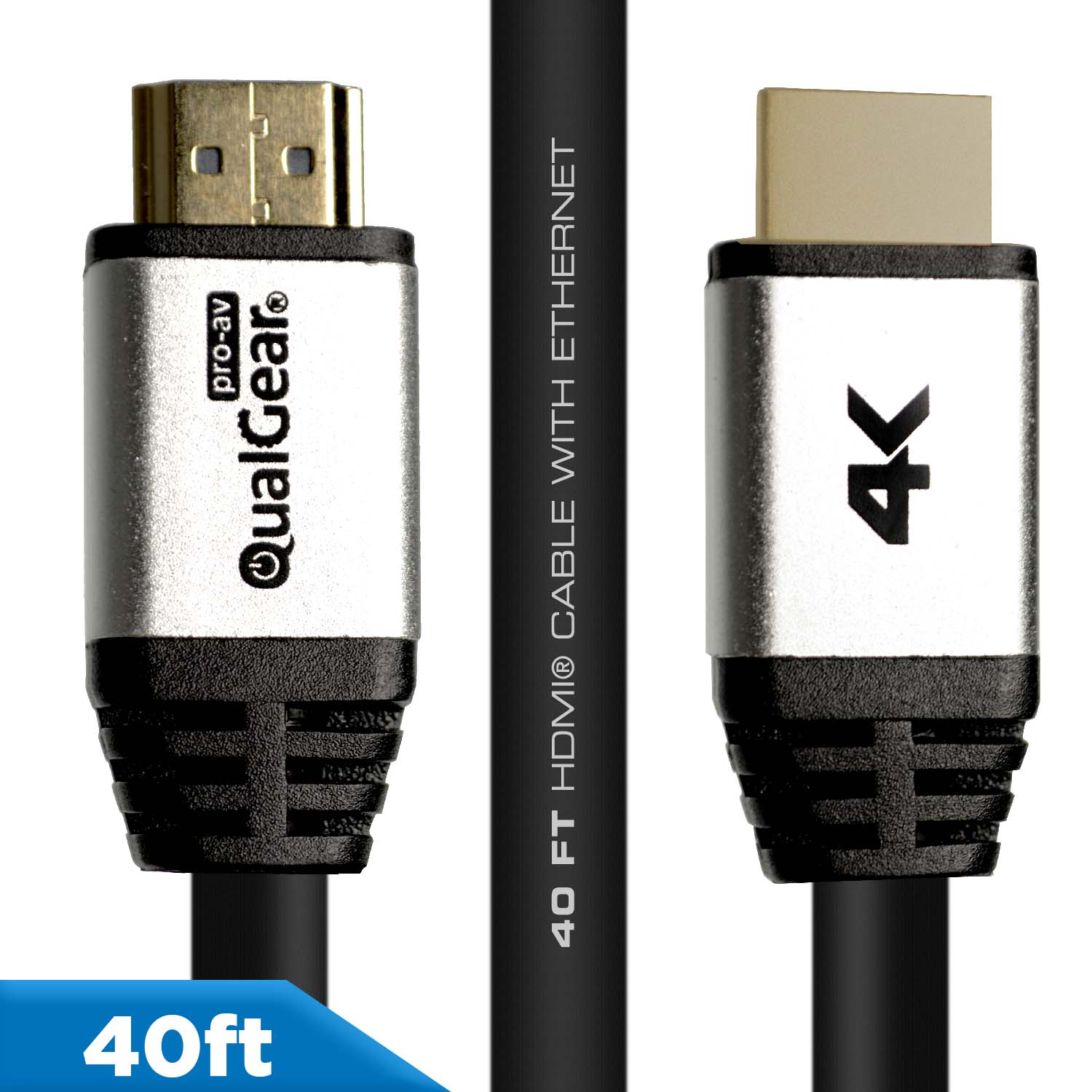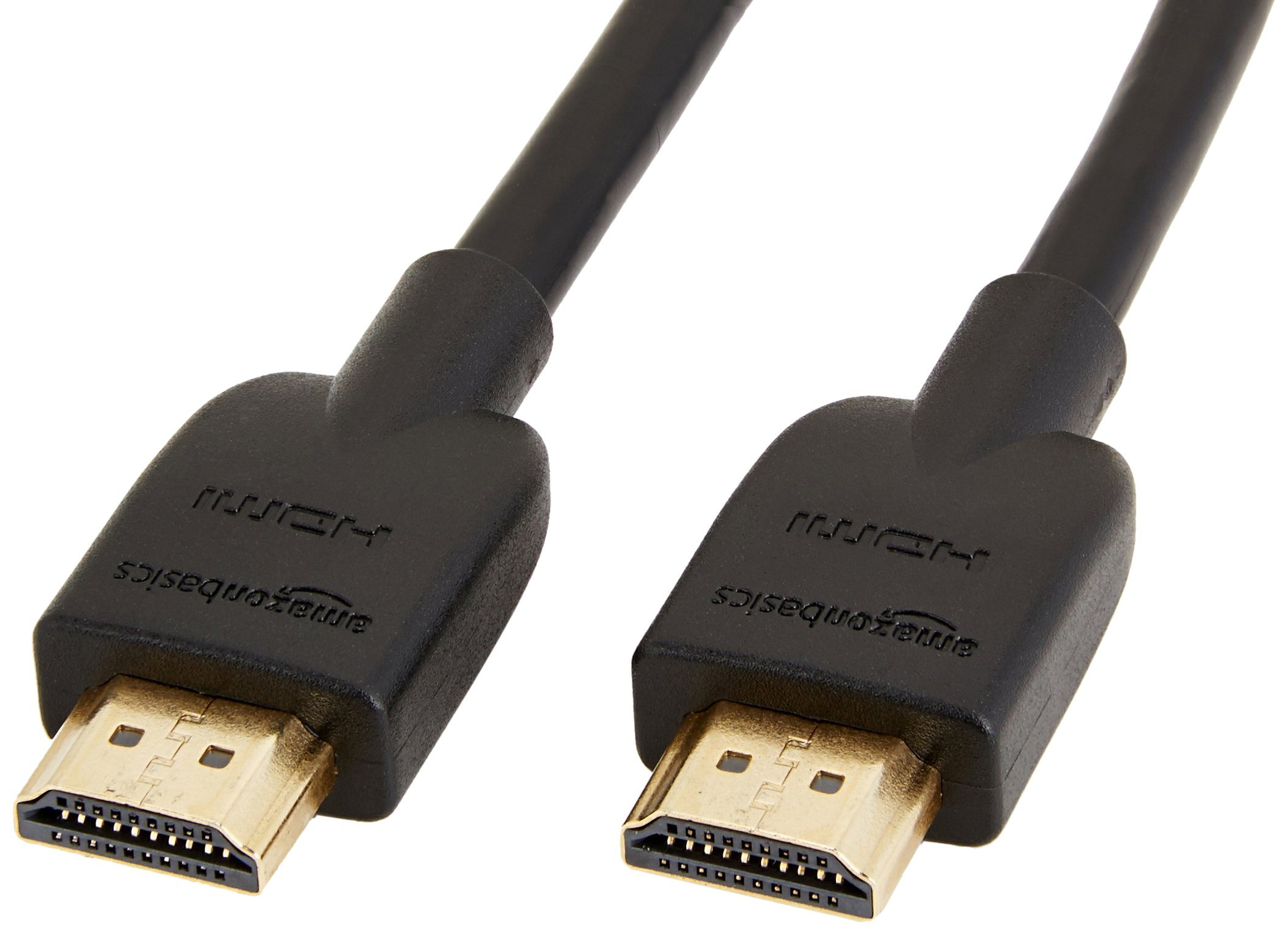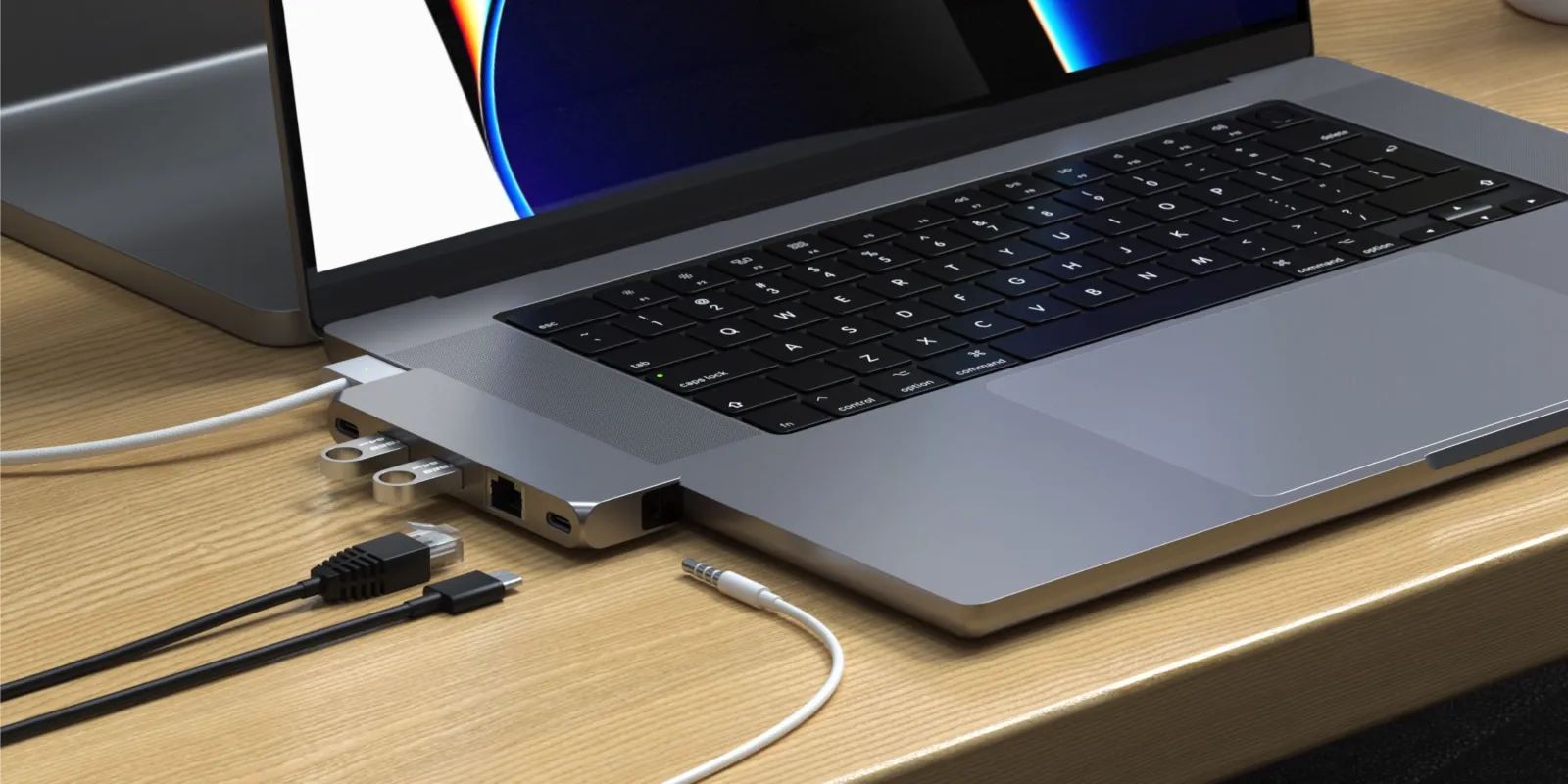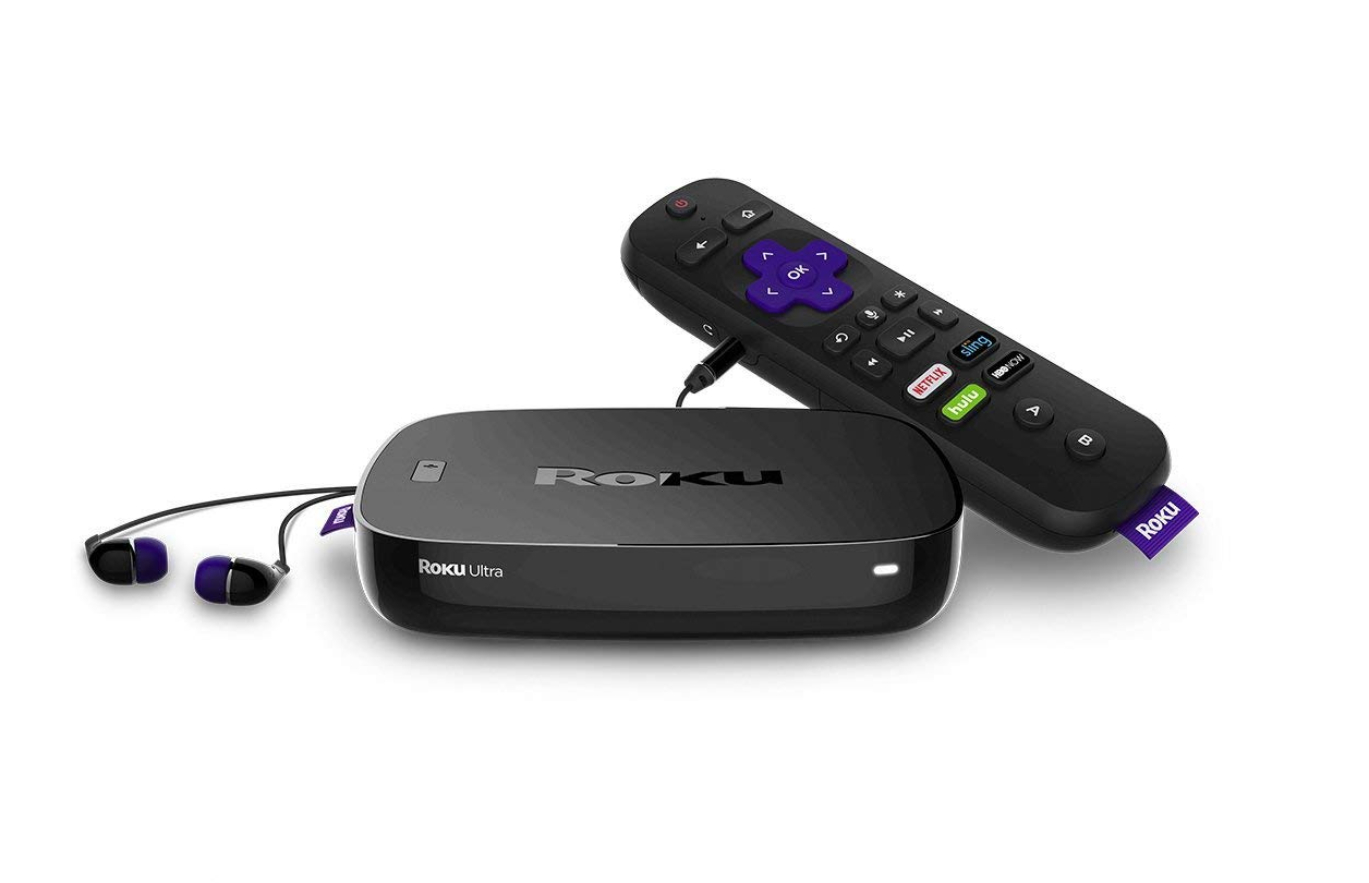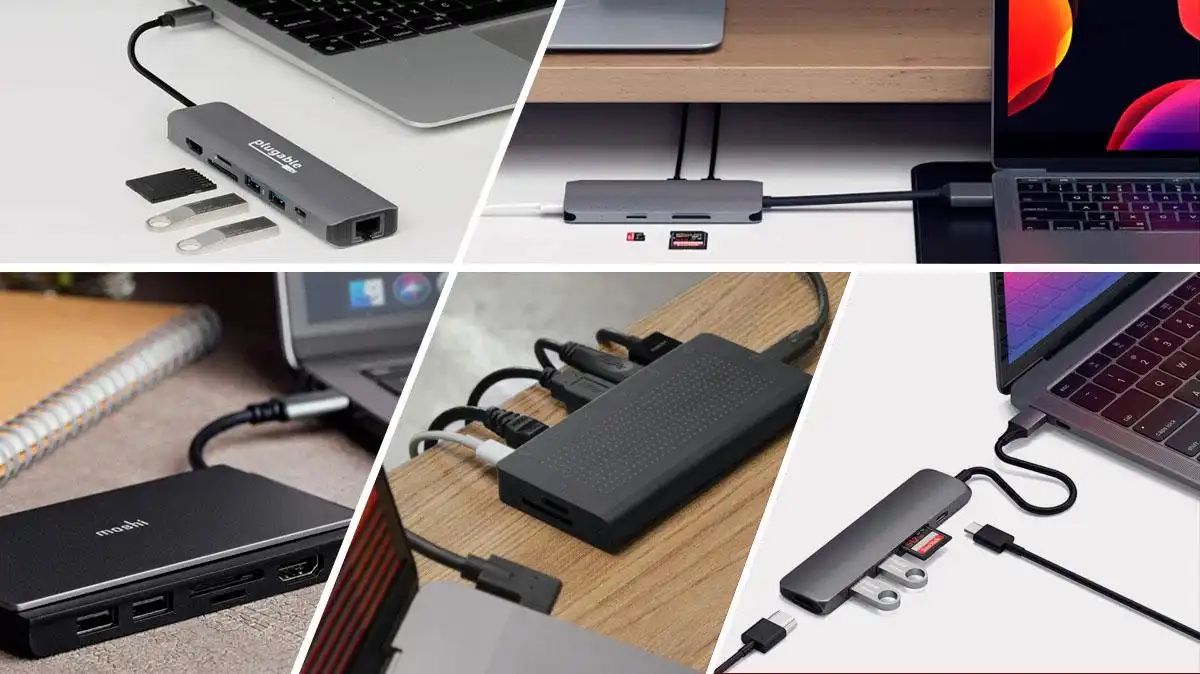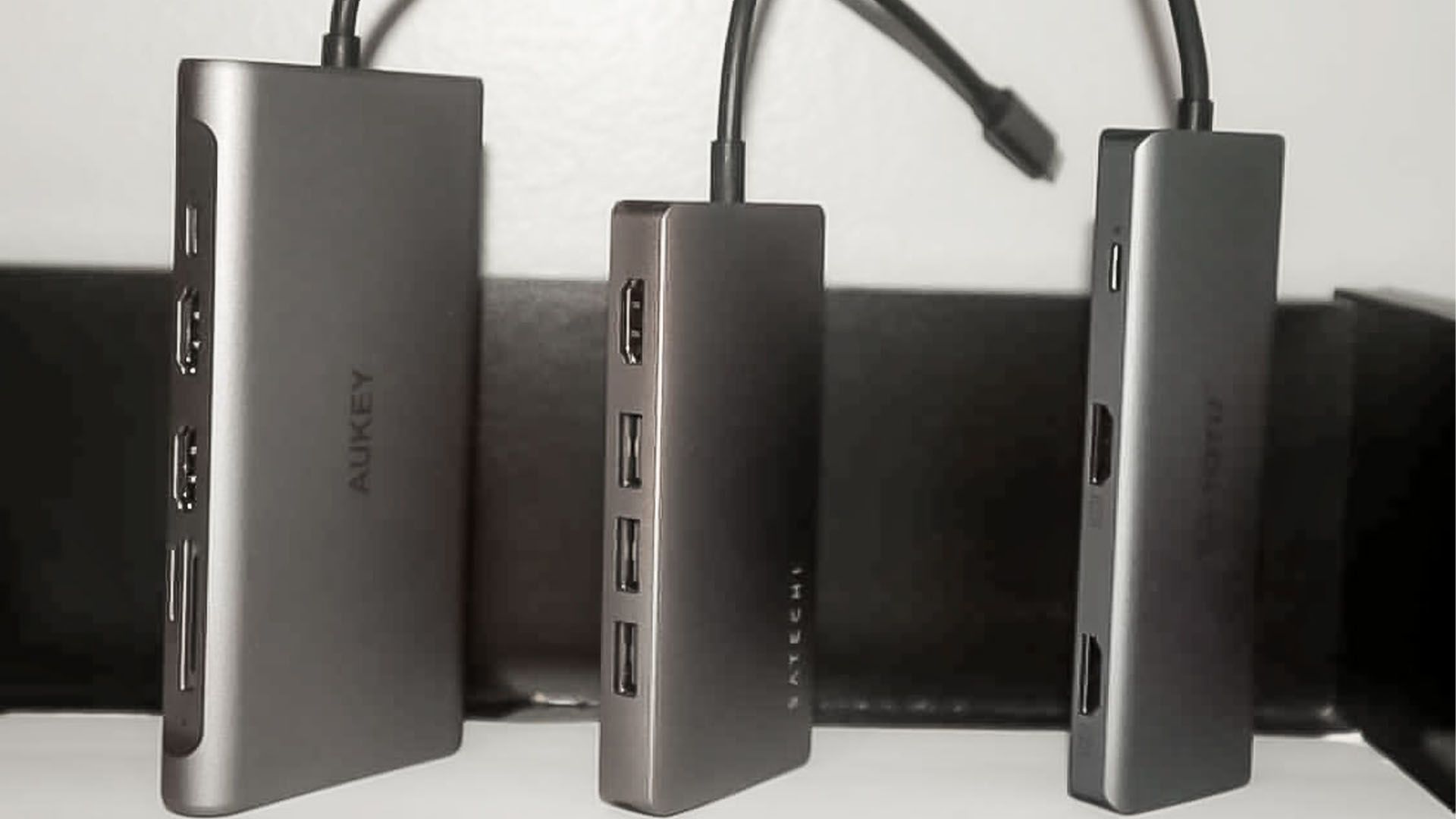Introduction
Welcome to the world of HDMI Ethernet cables! In this digital era, where we are constantly connected and seeking high-speed data transfer, HDMI Ethernet cables have become an essential component of our multimedia setup. These cables have revolutionized the way we connect devices, allowing for seamless transmission of audio, video, and data signals.
HDMI, which stands for High Definition Multimedia Interface, is a widely-used technology for transmitting high-quality audio and video signals between devices. It has become the standard connection interface for televisions, gaming consoles, Blu-ray players, and other media devices. Traditionally, HDMI cables were used solely for transmitting audio and video signals. However, with the introduction of HDMI Ethernet cables, they have evolved into a versatile solution that combines the capabilities of both HDMI and Ethernet.
HDMI Ethernet cables, also known as HDMI with Ethernet or HDMI over Ethernet, enable not only high-definition audio and video transmission but also the sharing of internet connectivity between HDMI-enabled devices. This means that you can use a single cable to connect your media devices to the internet, eliminating the need for additional Ethernet cables or Wi-Fi connections.
The integration of Ethernet functionality into HDMI cables opens up a world of possibilities. With HDMI Ethernet cables, you can enjoy features like online gaming, streaming content from online platforms, and accessing firmware updates for your devices, all without the hassle of separate network connections.
Whether you’re a gaming enthusiast, a movie buff, or simply someone who wants to streamline their multimedia experience, HDMI Ethernet cables are a game-changer. In this comprehensive guide, we will explore the ins and outs of HDMI Ethernet cables, from their functionality and benefits to choosing the right cable for your needs and troubleshooting common issues.
So, fasten your seatbelt and get ready to dive into the world of HDMI Ethernet cables. From understanding their inner workings to setting them up and troubleshooting any issues that may arise, we’ve got you covered. Let’s embark on this journey to elevate your audio-visual experience and make the most of your connected devices.
What is HDMI Ethernet Cable?
A HDMI Ethernet cable, also referred to as HDMI with Ethernet or HDMI over Ethernet, is a type of HDMI cable that combines the capabilities of HDMI and Ethernet into a single cable. It allows for the transmission of high-definition audio and video signals, as well as the sharing of internet connectivity between HDMI-enabled devices.
Traditional HDMI cables are designed solely for transmitting audio and video signals between devices like TVs, gaming consoles, and media players. However, HDMI Ethernet cables take it a step further by incorporating Ethernet functionality into the cable itself.
With HDMI Ethernet cables, you can connect your HDMI-enabled devices to the internet without the need for separate Ethernet cables or Wi-Fi connections. This means that you can enjoy online gaming, stream content from platforms like Netflix or Hulu, and access firmware updates for your devices, all through a single cable.
The Ethernet functionality of HDMI Ethernet cables is made possible by the HDMI Ethernet Channel (HEC), which is a feature of the HDMI specification. The HEC allows for two-way communication and data transfer between devices over the HDMI cable. This enables devices to share an internet connection, making it convenient for streaming media, online gaming, or accessing online content without the need for additional network cables or wireless connections.
It’s important to note that HDMI Ethernet cables are backward compatible with older HDMI devices. This means that you can use an HDMI Ethernet cable with devices that do not have Ethernet capabilities, and they will function as a regular HDMI cable for transmitting audio and video signals.
In summary, HDMI Ethernet cables are a versatile solution that combines HDMI functionality with Ethernet capabilities. They allow for the transmission of high-definition audio and video signals, as well as the sharing of internet connectivity between devices. With HDMI Ethernet cables, you can streamline your multimedia setup, reduce cable clutter, and enjoy a seamless audio-visual experience.
How Does HDMI Ethernet Cable Work?
Understanding how HDMI Ethernet cables work is essential to fully grasp their capabilities and how they enhance your multimedia experience. HDMI Ethernet cables integrate HDMI functionality with Ethernet capabilities, allowing for the transmission of audio, video, and data signals, as well as the sharing of internet connectivity between HDMI-enabled devices.
The Ethernet functionality of HDMI Ethernet cables is made possible by the HDMI Ethernet Channel (HEC), which is a feature of the HDMI specification. The HEC enables bidirectional communication and data transfer between devices connected via the HDMI cable.
When you connect devices using an HDMI Ethernet cable, such as a TV and a gaming console, the cable acts as both a high-speed data conduit and a power source. It carries audio and video signals from the source device (such as a Blu-ray player or streaming device) to the display device (such as a TV or monitor), ensuring a high-quality viewing experience.
In addition to audio and video signals, the HDMI Ethernet cable also allows for the sharing of internet connectivity. This means that you can access online services, stream content, and engage in online gaming without the need for separate Ethernet cables or wireless connections. The Ethernet channel within the HDMI cable carries the internet signal, providing a convenient and efficient way to connect your HDMI-enabled devices to the internet.
The HEC also enables other features such as device control, allowing you to use a single remote control to operate multiple HDMI-connected devices. Additionally, it supports Consumer Electronics Control (CEC), which lets you control multiple HDMI devices through a single remote control, simplifying your multimedia setup even further.
It’s important to note that HDMI Ethernet cables are backward compatible with older HDMI devices. This means that even if your devices do not have Ethernet capabilities, you can still use an HDMI Ethernet cable for transmitting audio and video signals.
In summary, HDMI Ethernet cables work by integrating HDMI functionality with Ethernet capabilities. They utilize the HDMI Ethernet Channel (HEC) to enable bidirectional communication, data transfer, and the sharing of internet connectivity between HDMI-enabled devices. With HDMI Ethernet cables, you can enjoy high-quality audio and video transmission, seamless internet connectivity, and simplified device control.
Benefits of HDMI Ethernet Cable
HDMI Ethernet cables offer a range of benefits that enhance your multimedia experience and simplify your setup. Let’s explore some of the key advantages of using HDMI Ethernet cables:
- Single cable solution: HDMI Ethernet cables combine the capabilities of HDMI and Ethernet into a single cable. This eliminates the need for separate Ethernet cables or Wi-Fi connections, reducing cable clutter and simplifying your setup.
- High-definition audio and video: HDMI Ethernet cables support high-definition audio and video transmission, allowing you to enjoy crystal-clear audio and vibrant visuals. Whether you’re watching movies, playing games, or streaming content, HDMI Ethernet cables deliver a superior audio-visual experience.
- Internet connectivity: The Ethernet functionality of HDMI Ethernet cables enables the sharing of internet connectivity between HDMI-enabled devices. This means you can access online services, stream content, and engage in online gaming without the need for additional network cables or wireless connections.
- Fast and reliable data transfer: HDMI Ethernet cables provide fast and reliable data transfer between devices. Whether you’re transferring files, sharing media, or accessing firmware updates, HDMI Ethernet cables ensure a seamless and efficient data transfer experience.
- Device control: HDMI Ethernet cables support Consumer Electronics Control (CEC), which allows you to control multiple HDMI-connected devices with a single remote control. This simplifies the operation of your multimedia setup, making it more convenient and user-friendly.
- Backward compatibility: HDMI Ethernet cables are backward compatible with older HDMI devices. Even if your devices do not have Ethernet capabilities, you can still use an HDMI Ethernet cable for transmitting audio and video signals.
- Simplified setup: With HDMI Ethernet cables, connecting your multimedia devices becomes easier than ever. You can enjoy a streamlined setup where a single cable provides both audio-visual transmission and internet connectivity, eliminating the need for multiple cables and connections.
In summary, HDMI Ethernet cables offer a range of benefits, including a single cable solution, high-definition audio and video transmission, internet connectivity, fast and reliable data transfer, device control, backward compatibility, and simplified setup. With these advantages, HDMI Ethernet cables enhance your multimedia experience, making it more convenient, efficient, and enjoyable.
Different Types of HDMI Ethernet Cable
When it comes to HDMI Ethernet cables, there are different types available to cater to specific needs and requirements. Understanding the different types can help you choose the right cable for your multimedia setup. Let’s explore some of the common types of HDMI Ethernet cables:
- Standard HDMI Ethernet Cable: This is the most common type of HDMI Ethernet cable. It supports the transmission of high-definition audio and video signals up to 1080p resolution. Standard HDMI Ethernet cables are suitable for basic home entertainment setups and are widely compatible with most HDMI devices.
- High-Speed HDMI Ethernet Cable: High-Speed HDMI Ethernet cables are designed for advanced multimedia setups that require higher resolutions, refresh rates, and color depths. These cables support video resolutions up to 4K, including 3D, and are capable of transmitting audio and video signals with high bandwidth.
- Premium High-Speed HDMI Ethernet Cable: Premium High-Speed HDMI Ethernet cables are an upgraded version of High-Speed HDMI cables. They offer enhanced features and capabilities, such as support for HDR (High Dynamic Range), Dolby Vision, and higher audio formats like DTS-HD Master Audio and Dolby Atmos. Premium High-Speed HDMI Ethernet cables are ideal for home theater enthusiasts and those seeking the best audio and video quality.
- Ultra High-Speed HDMI Ethernet Cable: Ultra High-Speed HDMI Ethernet cables are the latest addition to the HDMI cable lineup. They are designed to support the highest resolutions, refresh rates, and color depths, including 8K and 10K formats. These cables offer the most advanced features, such as Variable Refresh Rate (VRR), Auto Low Latency Mode (ALLM), and enhanced gaming capabilities. Ultra High-Speed HDMI Ethernet cables are well-suited for cutting-edge gaming setups and future-proofing your multimedia devices.
- Active HDMI Ethernet Cable: Active HDMI Ethernet cables incorporate active technology to ensure a reliable signal transmission over longer distances. These cables have built-in signal boosters that regenerate the HDMI signal, allowing for longer cable runs without signal degradation. Active HDMI Ethernet cables are suitable for large home theaters or setups where the devices are located far apart.
- Passive HDMI Ethernet Cable: Passive HDMI Ethernet cables are the standard, non-amplified cables. They are suitable for shorter cable runs and average home entertainment setups where signal loss is not a concern. Passive HDMI Ethernet cables are affordable and widely available.
It’s important to consider your specific needs and setup requirements when choosing an HDMI Ethernet cable. Factors such as the resolution, refresh rate, audio capabilities, cable length, and budget should be taken into account to ensure you select the right cable that meets your expectations and supports your multimedia devices.
In summary, there are different types of HDMI Ethernet cables available, including Standard HDMI, High-Speed HDMI, Premium High-Speed HDMI, Ultra High-Speed HDMI, Active HDMI, and Passive HDMI cables. Each type offers different features and capabilities to cater to varying multimedia needs and setups.
How to Choose the Right HDMI Ethernet Cable
Choosing the right HDMI Ethernet cable is crucial to ensure optimal performance and compatibility with your multimedia devices. With various types and specifications available, here are some factors to consider when selecting an HDMI Ethernet cable:
- Resolution and Refresh Rate: Determine the maximum resolution and refresh rate supported by your devices. If you have a 4K TV or plan to upgrade to one, ensure the cable supports 4K resolution and higher refresh rates for a crisp and smooth viewing experience.
- Audio Support: Consider the audio capabilities of the HDMI Ethernet cable. If you have audio systems that support advanced formats like Dolby Atmos or DTS-HD Master Audio, choose a cable that can transmit these audio formats.
- Cable Length: Measure the distance between your HDMI-enabled devices and select a cable length that accommodates the setup without excessive slack or tension. Remember, longer cables may require an active HDMI Ethernet cable to ensure signal integrity.
- Compatibility: Ensure that the HDMI Ethernet cable is compatible with your devices. Check the HDMI version and capabilities of your devices and choose a cable that supports the same or higher specifications.
- Budget: Consider your budget when selecting an HDMI Ethernet cable. While premium and ultra high-speed cables offer advanced features, they may come at a higher price point. Assess your needs and allocate a budget that offers a balance between quality and affordability.
- Brand and Quality: Opt for reputable brands that adhere to industry standards and provide good quality cables. Trusted brands often undergo rigorous testing and offer warranties, ensuring a reliable connection and durability of the cable.
- Future-Proofing: If you anticipate upgrading your devices or adopting advanced technologies in the future, consider investing in a higher-spec HDMI Ethernet cable that supports future resolutions, refresh rates, and features.
By considering these factors, you can make an informed decision and choose an HDMI Ethernet cable that meets your specific requirements and ensures optimal performance for your multimedia setup.
In summary, when choosing the right HDMI Ethernet cable, consider factors such as resolution and refresh rate, audio support, cable length, compatibility, budget, brand and quality, and future-proofing. Taking these factors into account will help you select a cable that delivers the best audio-visual performance and supports your current and future multimedia needs.
Setting Up HDMI Ethernet Cable
Setting up an HDMI Ethernet cable is a straightforward process that allows you to seamlessly connect your HDMI-enabled devices and enjoy high-definition audio, video, and internet connectivity. Here are the steps to set up an HDMI Ethernet cable:
- Identify the HDMI ports: Locate the HDMI ports on your devices, such as your TV, media player, gaming console, or Blu-ray player. Typically, HDMI ports are labeled and can be found on the back or side panel of the device.
- Plug in the HDMI Ethernet cable: Connect one end of the HDMI Ethernet cable to the HDMI output port of the source device, such as a media player or gaming console. Ensure a secure connection by inserting the cable into the port firmly but gently.
- Connect the other end: Take the other end of the HDMI Ethernet cable and plug it into the HDMI input port of the destination device, such as your TV or monitor. Again, ensure a secure connection by gently inserting the cable into the port.
- Power on the devices: Turn on the devices that you have connected with the HDMI Ethernet cable, starting with the source device and then the destination device. Use the respective power buttons on each device or their remote controls.
- Select the HDMI input: On your TV or monitor, change the input source to the HDMI port connected to the HDMI Ethernet cable. Most TVs have an input or source button on the remote control or the TV itself. Use this button to navigate and select the corresponding HDMI input.
- Configure the internet connection (if required): If you want to use the internet connectivity feature of the HDMI Ethernet cable, you may need to configure the internet connection on your HDMI-enabled device. This may involve accessing the device’s network settings and connecting to a Wi-Fi network or entering Ethernet settings.
- Test the connection: Once the devices are powered on and the HDMI input is selected on your TV or monitor, test the connection by playing a video or streaming content. Ensure that both audio and video are transmitted properly and that the internet connection is working if applicable.
With these steps, you can successfully set up and connect your HDMI-enabled devices using an HDMI Ethernet cable. Enjoy your seamless audio-visual experience and internet connectivity all in one cable!
In summary, setting up an HDMI Ethernet cable involves identifying the HDMI ports on your devices, plugging in the cable securely, powering on the devices, selecting the HDMI input on your TV or monitor, configuring the internet connection if required, and testing the connection. Following these steps ensures a smooth setup and allows you to take full advantage of the features provided by your HDMI Ethernet cable.
Troubleshooting HDMI Ethernet Cable Issues
Although HDMI Ethernet cables are designed to provide a seamless and reliable connection, occasionally, you may encounter some issues. Here are some common troubleshooting steps to help you resolve HDMI Ethernet cable issues:
- Check the cable connections: Ensure that the HDMI Ethernet cable is securely connected to both the source and destination devices. Sometimes, loose or faulty connections can cause audio, video, or internet issues.
- Try a different HDMI port: If you’re experiencing issues with a specific HDMI port, try connecting the HDMI Ethernet cable to a different port on the TV or monitor. This can help determine if the issue is with the port itself.
- Inspect the cable for damage: Check the HDMI Ethernet cable for any visible signs of damage, such as frayed wires or bent connectors. If you notice any damage, consider replacing the cable with a new one.
- Test with another HDMI Ethernet cable: If possible, try using a different HDMI Ethernet cable to connect your devices. This can help determine if the cable itself is the cause of the issue.
- Check device settings: Verify that the audio, video, and network settings on your devices are correctly configured. Ensure that the correct HDMI input is selected on your TV or monitor and confirm that the internet connection is properly set up if using the HDMI Ethernet cable for internet connectivity.
- Restart devices: Power off your devices, disconnect the HDMI Ethernet cable, wait for a few seconds, then reconnect the cable and power on the devices again. Sometimes, a simple restart can resolve temporary issues.
- Update device firmware: Ensure that the firmware or software on your HDMI-enabled devices is up to date. Manufacturers often release firmware updates to address compatibility issues and improve performance.
- Try a different input source or cable: If you have multiple HDMI input ports on your TV, try connecting the HDMI Ethernet cable to a different port. Additionally, if you have another HDMI cable available, try using it to rule out any issues specific to that particular cable.
- Reset devices to factory settings: As a last resort, you can try resetting your devices to their factory settings. Be aware that this will erase any customized settings and configurations, so make sure to back up any important data before proceeding.
If you have tried the above troubleshooting steps and are still experiencing issues with your HDMI Ethernet cable, it may be best to consult the manufacturer’s support or seek professional assistance for further troubleshooting and resolution.
In summary, troubleshooting HDMI Ethernet cable issues involves checking cable connections, trying different HDMI ports and cables, inspecting for damage, verifying device settings, restarting devices, updating firmware, trying different input sources, and resetting devices if necessary. By following these troubleshooting steps, you can resolve common issues and enjoy a smooth audio, video, and internet experience with your HDMI Ethernet cable.
Frequently Asked Questions
Here are answers to some frequently asked questions about HDMI Ethernet cables:
- Can I use an HDMI Ethernet cable without internet connectivity?
Yes, you can still use an HDMI Ethernet cable even if you don’t require internet connectivity. HDMI Ethernet cables function as regular HDMI cables for transmitting audio and video signals, regardless of whether you utilize the internet capabilities. - Are HDMI Ethernet cables backward compatible?
Yes, HDMI Ethernet cables are backward compatible with older HDMI devices that do not have Ethernet capabilities. You can use an HDMI Ethernet cable with these devices, and they will function as regular HDMI cables for audio and video transmission. - Do I need special settings to use the internet functionality of HDMI Ethernet cables?
In most cases, you don’t need any special settings to use the internet functionality of HDMI Ethernet cables. However, you may need to configure the internet settings on your HDMI-enabled devices, such as entering Wi-Fi details or Ethernet settings, to establish an internet connection. - Can I use an HDMI Ethernet cable for 4K and HDR content?
Yes, high-speed HDMI Ethernet cables and premium high-speed HDMI Ethernet cables support 4K resolution and HDR content. These cables are capable of transmitting the high bandwidth required for a rich viewing experience with vibrant colors and enhanced contrast. - What is the maximum length of an HDMI Ethernet cable?
The maximum length of an HDMI Ethernet cable without the use of signal boosters or amplifiers is typically around 50 feet (15 meters) for high-speed data transmission. For longer distances, you may need an active HDMI Ethernet cable with built-in signal boosters or consider using HDMI extenders. - Can I use multiple HDMI Ethernet cables in the same setup?
Yes, you can use multiple HDMI Ethernet cables in the same setup to connect multiple HDMI-enabled devices. Each cable will transmit audio, video, and internet connectivity individually between the corresponding devices. - Does the brand of the HDMI Ethernet cable matter?
While it’s important to choose a reputable brand that meets industry standards, the specific brand of the HDMI Ethernet cable typically does not affect its compatibility or performance. Focus on selecting a cable with the right specifications and quality construction. - Can I extend the length of an HDMI Ethernet cable?
Yes, you can extend the length of an HDMI Ethernet cable using HDMI extenders or repeaters. These devices amplify and transmit the HDMI signal over longer distances, allowing you to place your HDMI-enabled devices further apart without signal degradation.
If you have any additional questions about HDMI Ethernet cables or need further clarification, it’s advisable to consult the manufacturer’s documentation or seek expert advice.
In summary, HDMI Ethernet cables are compatible with various devices, offer backward compatibility, don’t require special settings, support 4K and HDR content, have a maximum length of around 50 feet without signal boosters, can be used in multiples, and don’t necessitate a specific brand for compatibility or performance.
Conclusion
HDMI Ethernet cables have transformed the way we connect our multimedia devices, providing a seamless solution for transmitting high-definition audio, video, and internet connectivity. These cables combine the capabilities of HDMI and Ethernet into a single cable, eliminating the need for separate Ethernet cables or Wi-Fi connections.
With HDMI Ethernet cables, you can enjoy high-quality audio and video transmission, access online services, stream content, engage in online gaming, and control multiple devices with ease. The integration of Ethernet functionality within the HDMI cable has simplified our multimedia setups, reducing cable clutter and providing a more convenient and efficient connectivity solution.
When choosing an HDMI Ethernet cable, consider factors such as resolution and refresh rate support, audio capabilities, cable length, compatibility, budget, brand, quality, and future-proofing to ensure the best performance and compatibility with your devices.
If you encounter any issues with your HDMI Ethernet cable, try troubleshooting steps such as checking cable connections, trying different HDMI ports, inspecting for damage, verifying device settings, restarting devices, updating firmware, trying different input sources, and resetting devices if necessary.
Remember that HDMI Ethernet cables are often backward compatible, and you can use them as regular HDMI cables for audio and video transmission even if you don’t require internet connectivity.
Whether you’re setting up a home theater, gaming console, or multimedia entertainment system, HDMI Ethernet cables provide a reliable and convenient solution for connecting and enjoying your audio-visual content. Consider your specific needs and requirements, choose the right HDMI Ethernet cable, and elevate your multimedia experience today.







